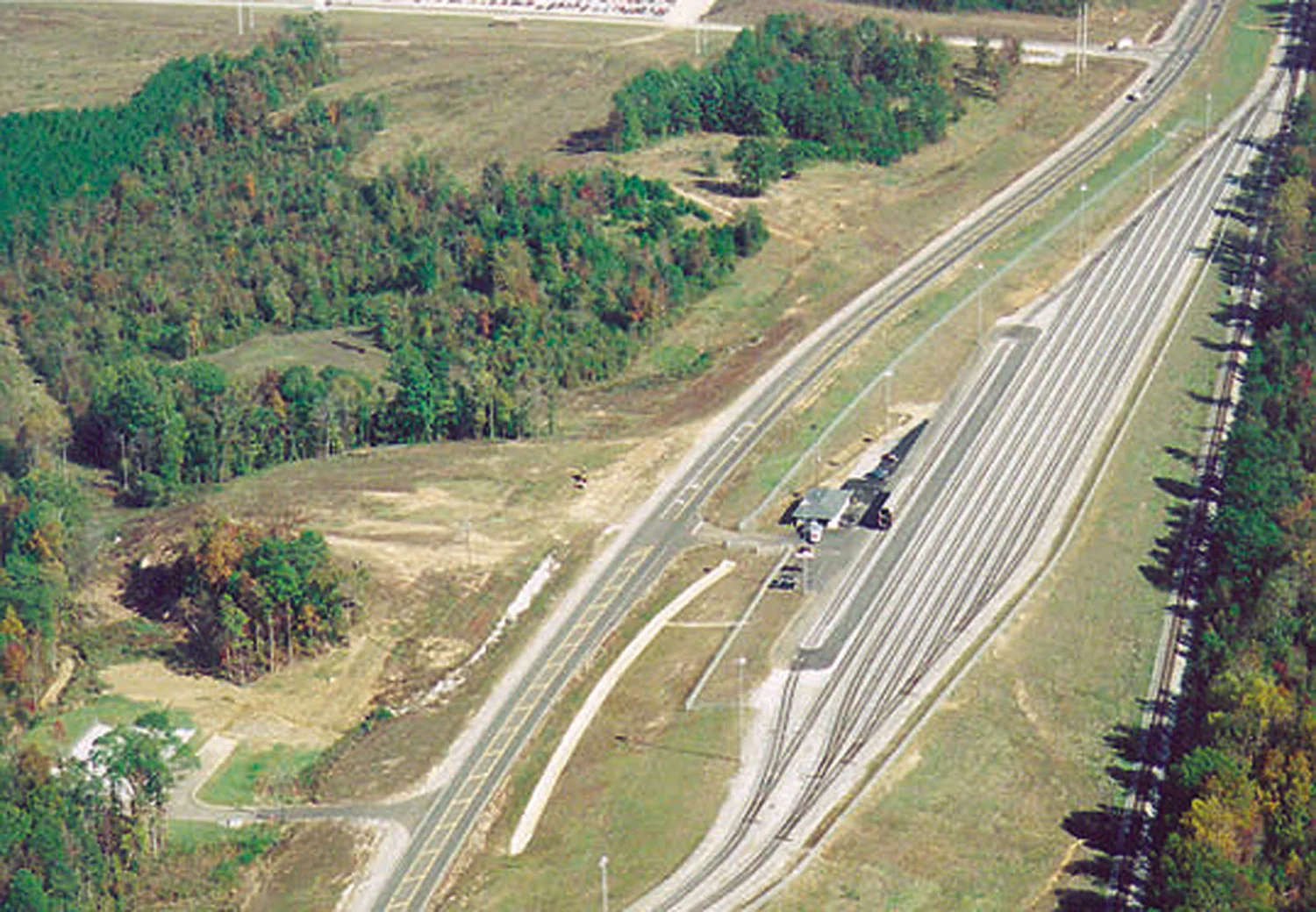
Tuscaloosa County Commission Mercedes-Benz Railroad Bridge & Prep Yard
BKI was contracted to provide the preliminary and final plans, specifications, estimates, construction administration, and resident inspection for the construction of a railroad prep yard and a bridge crossing to provide rail service to the Mercedes-Benz automotive facility.
The project consisted of over 25,000 linear feet of railroad track, including two shipping yards, 24 manual switches, a complete rail yard prep building, fencing, utilities and lighting of the prep yard. The proposed rail and yard design was performed to meet the standards of the American Railway Engineering Association and the Norfolk Southern Railroad.
Additionally, the project included a 16-foot-deep fabricated steel plate girder railroad bridge crossing US Hwy 11 to provide access into the Mercedes-Benz plant site. Concrete bridge abutments and reinforced earth wing walls with a maximum height of 65 feet at the bridge abutments were incorporated into the design of this project.
The total construction cost for this project was approximately $10.2 million.

CN Railway Master Service Agreement
BKI was selected by CN Railway Southern Division to prepare permits and construction documents including feasibility studies, wetland delineations, permitting, plans and specifications for the installation of rail siding and rail yard expansions in southeast Louisiana.
The installation of siding tracks and yard track expansions was necessitated from an increase in rail traffic to the petrochemical plants in the area. The siding and yard expansion projects were located along CN’s Hammond Main, from Hammond to Baton Rouge, and the Baton Rouge Main, from Baton Rouge to New Orleans. CN provides rail service to the petrochemical plants and industry along the Mississippi River, from Baton Rouge to New Orleans.
BKI and CN coordinated extensively with the Parish councils and administrations to ensure the success of the projects. BKI worked closely with CN Railway Southern Division to coordinate track improvements and roadway improvements and develop a logical sequence of construction.
BKI provided feasibility studies, wetland delineations, permitting, preliminary plans, final plans, specification preparation, bidding assistance, construction administration, engineering during construction, and periodic site visits. The project also included the preparation of permits for the Department of Natural Resources, the Department of Environmental Quality, the Coastal Protection and Restoration Authority of Louisiana, the Department of the Army, and various levee districts.

Southern High Speed Rail Commission Intercity Passenger Rail Feasibility Study
BKI was chosen by the Southern High Speed Rail Commission to perform a feasibility study. As part of the effort to develop the federally-designated Gulf Coast High-Speed Rail Corridor and to assist the state of Louisiana in its Hurricane Katrina recovery, the LADOTD joined with the Southern High-Speed Rail Commission to fund a feasibility study to determine the benefits to Louisiana of implementing high-speed passenger rail service between Baton Rouge and New Orleans.
As part of a federally-designated high-speed rail corridor, the Baton Rouge to New Orleans segment was eligible for Federal Railroad Administration grants under the Next Generation High-Speed Rail Grant Program. The purpose of the study was to analyze potential ridership, capital and operating costs, economic and public benefits, prepare an FRA programmatic environmental assessment, and to develop a financial/business plan to implement the proposed service.
BKI performed the analyses and reported to the Secretary of LADOTD that the project would provide economic benefits to the state, that the benefit/cost ratio for the state’s investment in the rail service would be 1.4 and the rate of return on investment would be 4%, expected benefits would exceed costs by over $180 million, and the added value of existing and new development in proximity to the rail stations would be about $50 million. The LADOTD Secretary directed the project team to pursue funding for the project by preparing an application for a grant from the American Recovery and Reinvestment Act through the FRA’s Passenger Rail Investment and Improvement Act.



